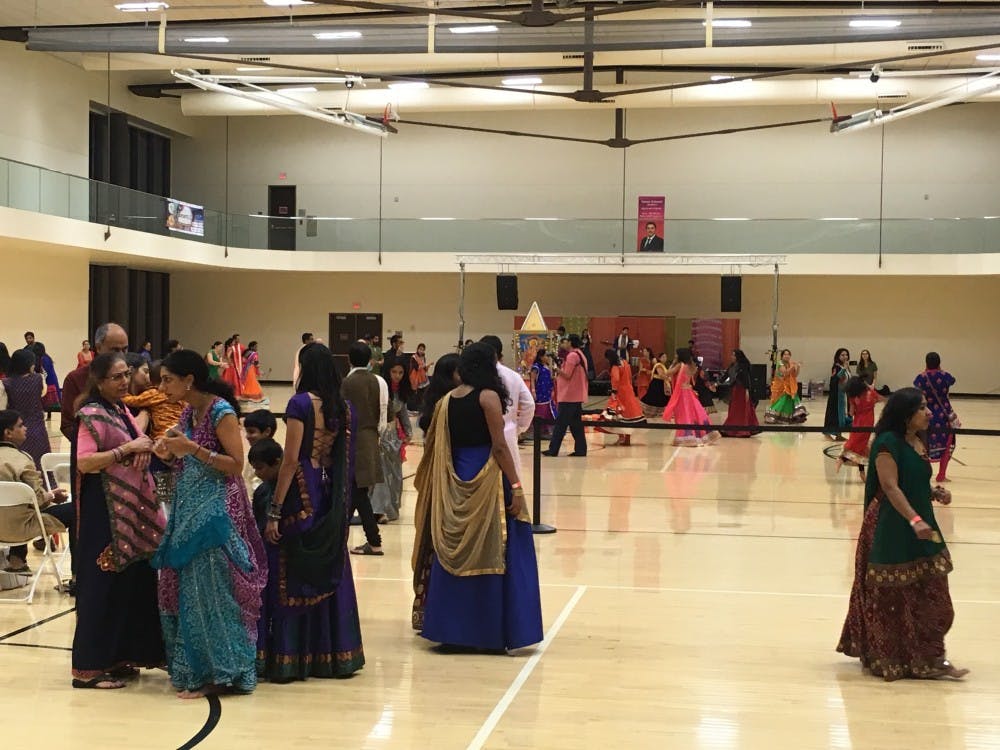For the world's 1 billion Hindu adherents, the celebrations of Navratri are times of joyous festivities meant to recognize several goddesses and the triumphs of good over evil in an ongoing cosmic struggle for balance.
The story typically associated with Navratri is that of the battle between Durga and the Mahishasura, a demon who represents egotism.
A nine-night celebration that is ushered in at the beginning of autumn, Navratri generally falls within the months of September or October on the Gregorian calendar. The holiday takes place in the month of Ashvina on the Hindu lunisolar calendar.
Starting last weekend, ASU’s Sun Devil Fitness Complex held its very own Navratri festival co-hosted by AZIndia and Sur Sargam Entertainment.
There will be another round of celebrations held Sept. 29 and 30 to commemorate the end of the festival cycle. Tickets can be purchased here or at the door.
Swastik Banerjee, a core committee member of Sur Sargam Entertainment and an ASU alumnus, said this is the first year his organization has worked with AZIndia and committed to the use of a venue as large as the SDFC for Navratri.
“The reason we wanted to have our Navratri celebrations at ASU is because it is easily accessible to a lot of people due to its central location in the Phoenix metropolitan area as well as the exposure the event can get to non-Indian people because of ASU’s global community,” Banerjee said.
Although the event is Hindu in origin, people of all faiths in India celebrate the occasion, Banerjee said. This is reflected in the Arizona community as well.
“We involve all religious communities, respective of all their religious beliefs," Banerjee said. "It is an all-inclusive festival where all the people in the community get together to celebrate this auspicious occasion. There’s fun, food, entertainment and music."
Traditionally, though it varies by region, a dance known as the Garba is performed at Navratri festivals.
“We dance around the goddess Durga, in her various forms, to gain her blessing throughout the nine days," Banerjee said. "The dance is performed in concentric circles because in our culture we compare it to the cycle of time. We believe in a circular concept of life, death and rebirth."
Although traditional garb varies by region, every adherent dresses their best for Navratri. Sree Manasvini Subbaraman, an urban planning sophomore, said men wear such things as kurtas, and in her region of origin women wear saris and half-saris.
“Children wear matching silk skirts and tops. Both men and women can also be found wearing churidars, which are long dress-like tops. Women especially take the occasion to show off their closet,” Subbaraman said.
As with any religion that can trace its history as far back as Hinduism, there are many traditions and practices involved with Navratri, but the core of it remains the same regardless of the region.
“(Navratri) back home and especially here is nice because you meet people who do the same things as you," said sophomore journalism major Mythili Gubbi. "Everyone dances and eats; you get to see all your relatives and close family friends. It is a time where we all celebrate and come together, and that’s an amazing thing."
Reach the reporter at aalmouai@asu.edu or follow @shazzam_96 on Twitter.
Like The State Press on Facebook and follow @statepress on Twitter.




